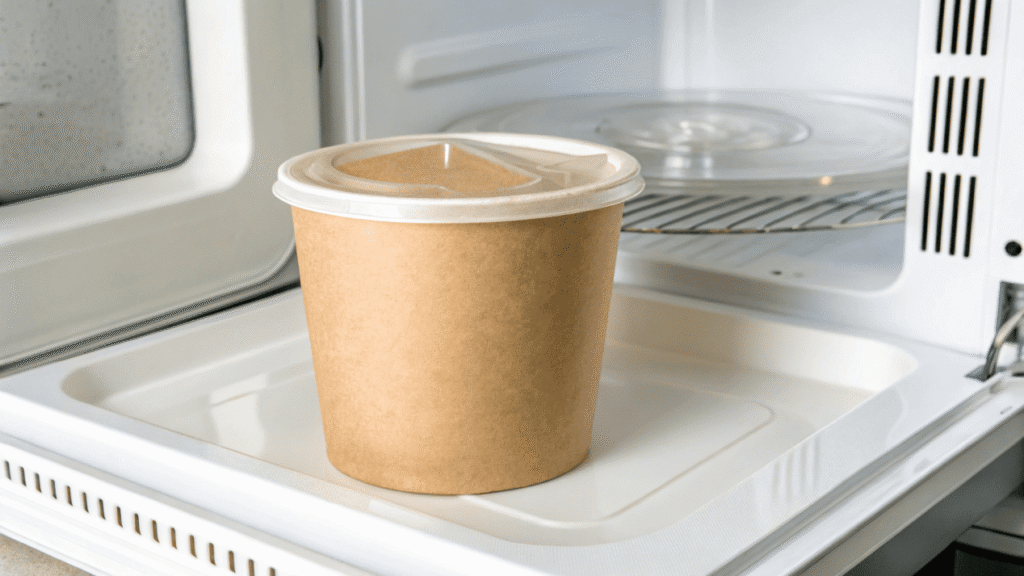Packing soup for lunch feels like a risky mess. You worry about leaks ruining your bag. But the right container with a secure lid makes it clean and simple.
A quality soup container makes lunch easier by using a tight, leak-proof lid to prevent spills. It is lightweight for easy portability and made from microwave-safe materials for quick reheating. This simple tool guarantees a clean, convenient, and warm meal anywhere.
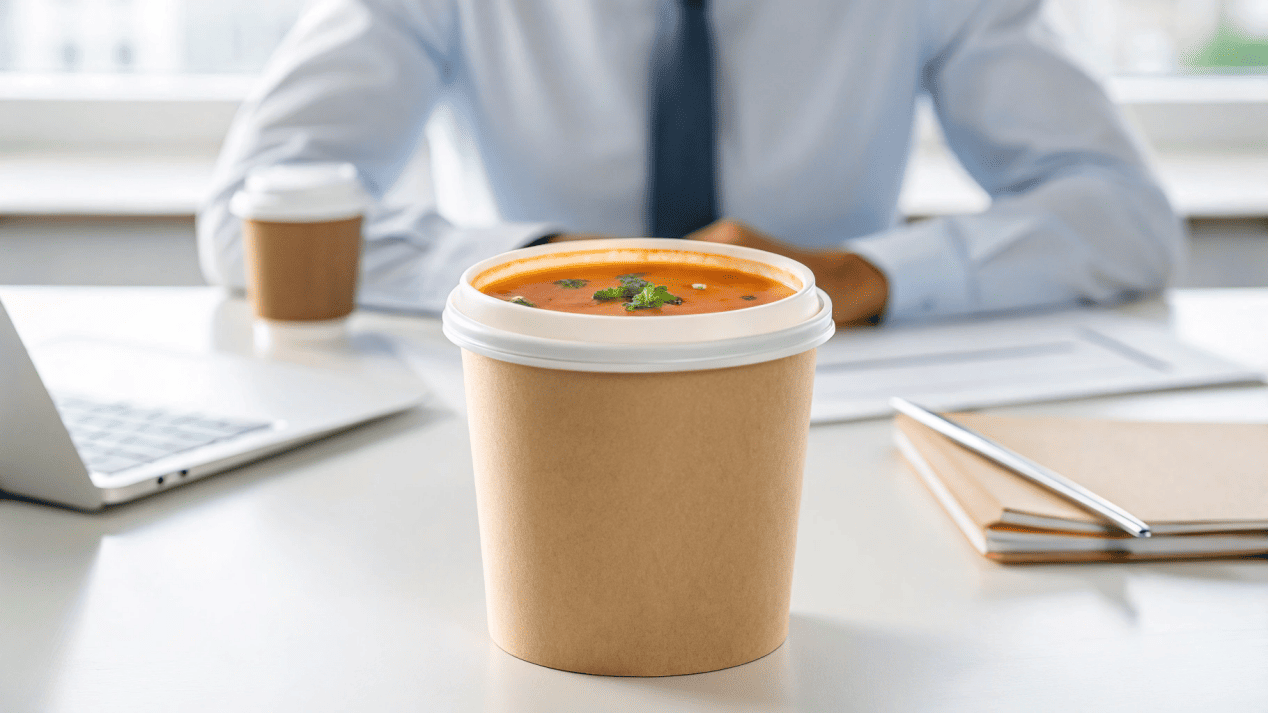
I remember one time years ago, I packed some homemade soup for lunch. I put the cheap container in my bag, and by the time I got to the office, my bag was a disaster. It was a classic "design failure" that ruined my day. As an engineer, this got me thinking about the details that separate a bad container from a great one. It’s not just about holding soup; it’s about solving all the little problems that make taking soup to-go so stressful. Let's look at the engineering and design that makes it all work.
How Exactly Do Lids Stop Soup From Spilling?
Packing hot soup is a gamble. Pressure builds up inside, risking a lid pop-off disaster. The secret is a well-designed lid with vents to release steam safely.
A secure, tight-fitting lid creates a physical seal around the container's rim. Vented lids are crucial for hot soups because they allow steam to escape, preventing pressure buildup that can pop the lid off and cause leaks.
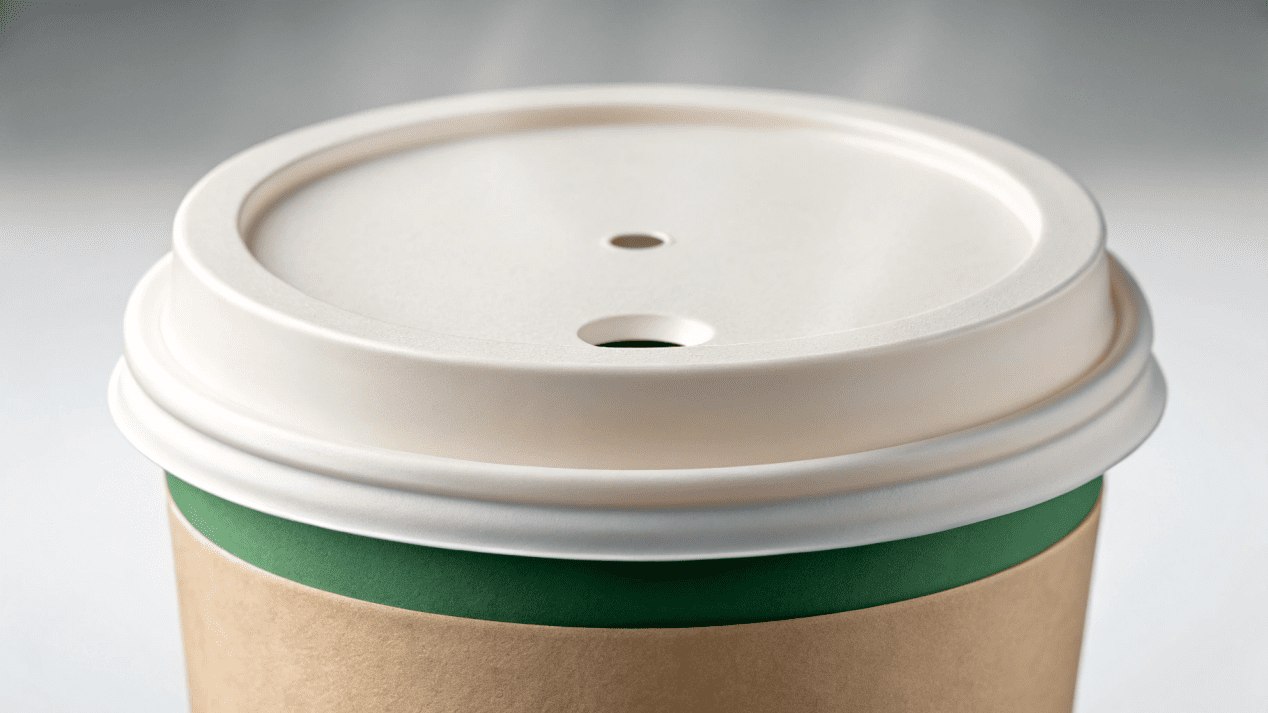
The single biggest fear when packing soup is a leak. As an engineer who designs these products, spill prevention is our number one priority. It’s a challenge that involves both physics and clever mechanical design.
The Mechanics of a Secure Seal
There are two main types of seals we use. A press-fit lid snaps tightly inside the rim of the cup, using tension to create a seal. A snap-on lid fits over the rim and locks onto the outside edge. Both are designed with very tight tolerances—fractions of a millimeter—to ensure there are no gaps for liquid to escape during transit. The material of the lid, usually a slightly flexible plastic, is chosen to maintain this tight seal even with temperature changes.
The Critical Role of Vented Lids
For hot soup, a simple sealed lid is not enough. The steam from the hot liquid creates pressure inside the container. This pressure can warp the container or, worse, pop the lid right off. A vented lid solves this problem with a tiny, engineered hole. This hole is large enough to let steam escape slowly, releasing the pressure, but small enough to prevent liquid from splashing out. It's a simple feature that makes all the difference for safety and cleanliness.
| Lid Type | Best For | How It Works |
|---|---|---|
| Standard Seal | Cold Soups / Foods | Creates a tight physical barrier. |
| Vented Seal | Hot Soups / Foods | Safely releases steam pressure to prevent leaks. |
What Makes a Soup Container Truly Easy to Carry?
Packing soup often means a heavy container and a lukewarm meal. Lugging it around is a pain. But modern containers are designed to be lightweight and insulated for perfect portability.
True portability comes from lightweight materials like paperboard and a compact, easy-to-carry shape. Insulated double-wall options are even better because they keep soup hot for hours, eliminating the need to find a microwave.

A container is only useful if you can actually take it with you. Portability is all about reducing weight and maintaining temperature, two key engineering challenges we focus on.
Material and Weight
The choice of material is the first step. While glass or thick plastic containers work, they are heavy and bulky. That's why we specialize in high-quality paperboard. It's incredibly strong for its weight, making it easy to carry in a backpack or lunch bag without adding unnecessary heft. We design them to be stackable and compact, so they don't take up too much space. This is especially important for our clients in the food service industry who need to store thousands of them.
The Power of Insulation
The second part of portability is keeping the soup at the right temperature. This is where double-wall construction comes in. By creating a small air gap between two layers of paperboard, we create a pocket of insulation. This air gap dramatically slows down heat transfer, keeping hot soups hot and cold soups cold for hours. This means you can enjoy your lunch at the perfect temperature, whether you're at your desk, on a construction site, or having a picnic in the park.
Is It Actually Safe to Microwave These Paper Containers?
You need to reheat your soup at the office. But microwaving disposable containers feels risky. The key is using containers certified to be made from specific, microwave-safe materials.
Yes, if the container is specifically marked as microwave-safe. These are made from materials like durable paperboard or BPA-free plastic that won't warp or leach chemicals. Always loosen or use a vented lid to let steam escape.
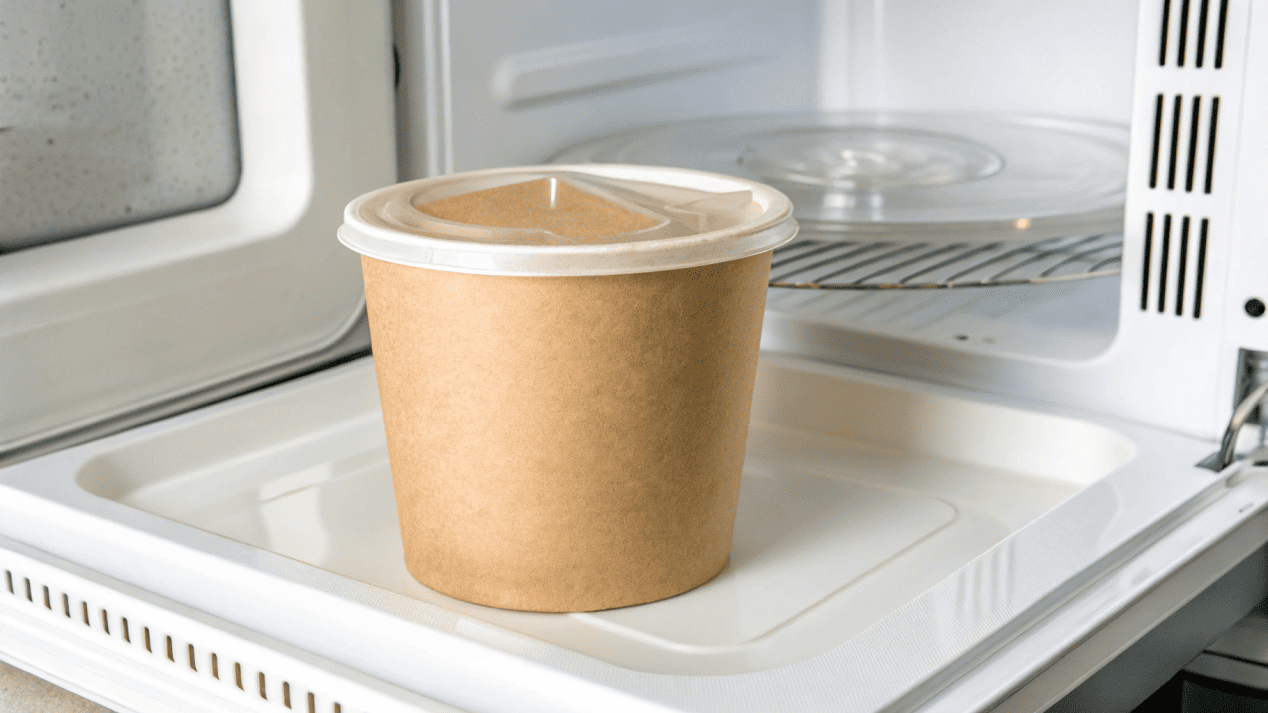
This is a question I get from clients all the time, and it is a very important one. Safety is non-negotiable. Not all disposable containers are created equal, and putting the wrong one in the microwave can be dangerous.
What Makes a Container Microwave-Safe?
The material is everything. Microwave-safe paperboard is made with specific fibers and coatings that can withstand high temperatures without breaking down, warping, or catching fire. Critically, we ensure all components, including the internal coating and the inks used for printing, are made from food-grade materials that will not leach harmful chemicals into your food when heated. All our microwave-safe products go through rigorous testing to meet international standards like those from the FDA.
Reheating Best Practices
Even with a safe container, you need to reheat soup correctly. The biggest danger is a steam explosion. If you microwave a sealed container, the pressure can build up until it violently blows the lid off, spraying hot soup everywhere. This is extremely dangerous. Always make sure the lid is either removed, placed loosely on top, or is a vented lid designed for microwaving. This allows the steam to escape harmlessly.
| Safety Check | Why It's Important |
|---|---|
| Check for "Microwave-Safe" Symbol | Guarantees the material can handle heat. |
| Ensure it's BPA-Free | Prevents harmful chemical leaching. |
| Always Vent the Lid | Prevents dangerous pressure buildup and steam explosions. |
How Can a Simple Soup Container Help Build Your Brand?
Your soup is amazing, but it's served in plain, forgettable packaging. This is a missed opportunity. Custom printing turns every container into a powerful mobile advertisement for your brand.
A custom-printed soup container acts as a mobile billboard. Your logo and design are seen by the customer and everyone they encounter. This increases brand recognition, communicates professionalism, and makes a memorable impression.
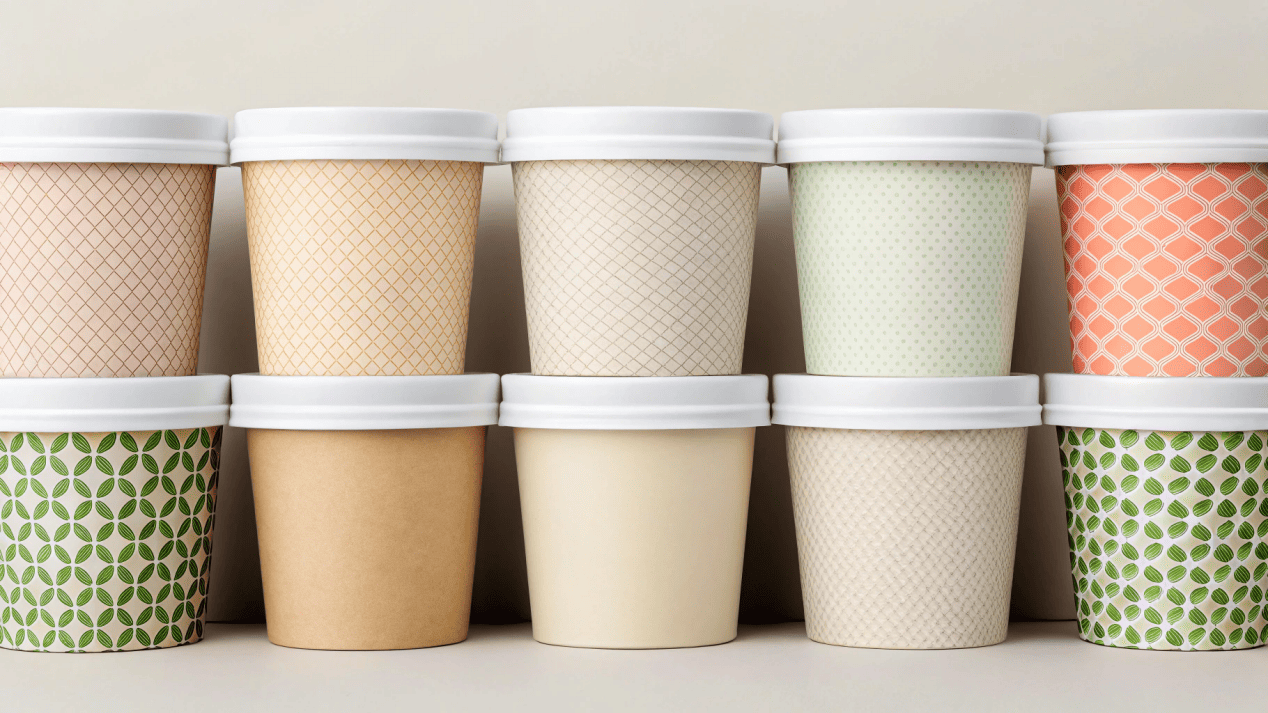
As a manufacturer, I don't just sell containers; I help businesses grow. And one of the most effective and affordable ways to do that is through custom packaging. For my clients in the restaurant and food service business, the soup container is a powerful marketing tool.
Your Packaging is a Billboard
Think about it. A customer buys your soup and carries it back to their office, a park, or their home. Everyone they pass sees your brand. The container sits on their desk for an hour. Their colleagues see it. This is advertising that you don't have to pay extra for. A well-designed container with a sharp logo and attractive colors makes your business look professional and successful. It sends a message that you care about quality, right down to the smallest detail.
Creating a Memorable Experience
A generic, plain white container is forgettable. A beautifully designed, custom-branded container makes an impression. It enhances the customer's experience and connects the quality of your food with a strong visual identity. It makes them more likely to remember you and order again. We work with our clients to print on the entire surface of the container, and even on the lid, to create a complete, 360-degree brand statement that helps them stand out from the competition.
Conclusion
The right soup container solves spills, makes transport easy, and allows for safe reheating. For businesses, it is a powerful branding tool, making lunch better for everyone involved.
